F1. Money and Finances
Demonstrate the knowledge and skills needed to make informed financial decisions.
Learning Situation: I am Making a Budget!
Total duration: approximately 200 minutes
Overview
In this learning situation, students establish a simple budget in order to reach a financial goal. To do this, students will have to calculate the value of expected income and expenses. They will estimate and calculate the total, including sales taxes, of various purchases. For one of the purchases, the students will determine the lowest unit price from several choices.
| Overall Expectation | Specific Expectations |
|---|---|
| F1. Financial Literacy
Demonstrate the knowledge and skills needed to make informed financial decisions. |
F1.2 Estimate and calculate the cost of transactions involving multiple items priced in dollars and cents, including sales tax, using various strategies. F1.3 Design sample basic budgets to manage finances for various earning and spending scenarios. F1.5 Calculate unit rates for various goods and services, and identify which rates offer the best value. |
|
Preferred High-Impact Instructional Practices in Mathematics |
Description |
|---|---|
|
Learning Goals, Success Criteria and Descriptive Feedback |
Before beginning this learning situation, it is essential to make the learning goals, based on the curriculum expectations and content, explicit so that they are known and understood by all students. This will ensure that students are aware of the learning goals of the lesson. The success criteria can then be developed and understood through a variety of instructional strategies, such as using examples of student work, co-constructing the success criteria or self-assessing how the criteria have been met. These strategies allow for student engagement and a shared understanding of the steps needed to achieve the learning goals. It is important to make the learning goals and success criteria visible by posting them in the classroom for students to refer to throughout the lesson. Descriptive feedback related to the criteria provides the specific information students need to achieve the intended learning goals. By providing descriptive feedback on multiple occasions, educators help students develop the skills to assess their own learning and reflect on the criteria. Students work and communicate in small groups to establish a simple budget by calculating income and expenses, estimating and calculating the total purchase price of various items (including sales taxes), and determine the best choice using the concept of unit price. Students work and communicate in small groups, and, with thoughtful questioning, educators check for understanding and direct students to the criteria to adjust or justify their work. During the Review phase, mathematical conversations may include descriptive feedback from educators as they probe for students' reasoning about their choices when establishing a budget, and the strategies they used to calculate the cost of transactions and the unit prices. |
|
Tools and Representations |
By representing the budget and calculating various costs, including taxes, students demonstrate an understanding of the money connected to financial management. The exchange between students about the various choices of tools and representations can contribute to conceptual understanding and provides educators with insight into student learning and thinking. The educator assesses student understanding during this activity and intervene, as required, at appropriate times. |
| Prior Knowledge and Skills | |
|
To be able to complete this learning situation, students must be able to:
|
|
Learning Goals
At the end of this learning situation, the student will be able to:
- Estimate and calculate the cost of transactions involving several items, including sales taxes.
- Establish a basic budget.
- Calculate the unit price of various products.
Possible Success Criteria Based on the Achievement Chart
|
Skill |
Success Criteria |
|---|---|
|
Knowledge and Understanding |
The student demonstrates an understanding of the Harmonized Sales Tax (HST) and its impact on the total cost of a purchase. The student demonstrates an understanding of unit rate. The student demonstrates an understanding of the elements of a basic budget. The student estimates and calculates the total cost of transactions involving several items, including sales taxes. The student identifies a financial goal as well as income and expenses. |
|
Thinking |
The student selects the correct data and appropriate operations. The student selects strategies for estimating and calculating the total cost of transactions involving multiple items, including sales taxes. The student selects strategies for managing finances in various situations. The student chooses strategies to calculate the unit price of various goods and services. The student interprets the results according to the context presented. |
|
Communication |
The student communicates mathematical thinking using financial literacy conventions and vocabulary. The student justifies their choices using mathematical evidence. The student organizes their calculations by showing their work. |
|
Application |
The student calculates the unit price of various products. The student estimates and calculates the total cost of transactions involving several items, including sales taxes. The student creates a basic budget. |
Materials
- calculators
- Canadian play money kit
- dry-erase markers
- erasable whiteboard
- markers
- chart paper
- paper
- Appendix 1 - Scenario
- Appendix 2 - Miguel's Scenario
Mathematical Vocabulary
basic budget, expense, income, financial goal, transaction, cash, unit price, sales tax
Before Learning (Warm-Up)
Duration: 20 minutes
Assessment can be carried out through…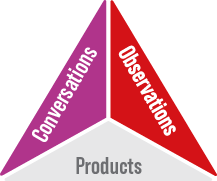
Display these images on the interactive whiteboard and ask the students to observe them carefully:
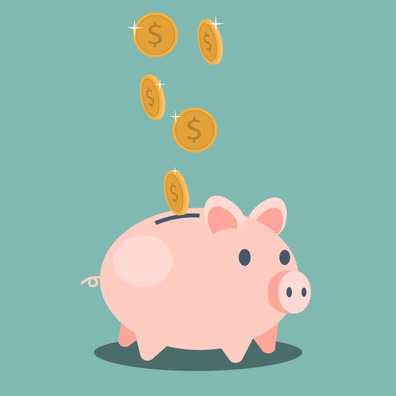
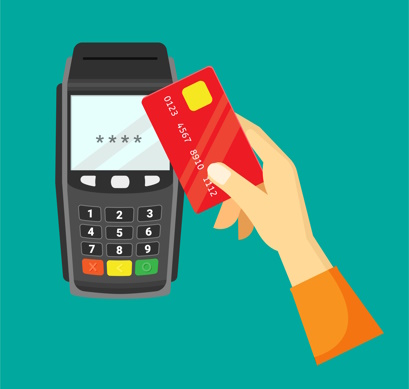
Facilitate a discussion with the students, noting the answers on the board or on chart paper.
- What do you notice about these images?
- What words do the pictures make you think of?
- Are there similarities between the images? Differences?
- If you could choose a theme for these images, what would it be?
- Have you ever seen some elements of the images in your daily life?
- Is it always the same kind of transaction in each image?
- Is there one image you like more than the others? Why?
Active Learning (Exploration)
Duration: 60 minutes
Assessment can be carried out through…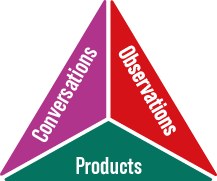
Form teams of two students.
Provide students with the necessary materials.
Present the following scenario to the students:
Over the course of the year, Miguel received $70 as gifts. He earns $20 every time he mows his neighbour's lawn, and he receives $5 each time he does household chores.
At some point, he bought a video game from his friend for $25.
For the start of the school year, he wants to buy sneakers, a sweater, a cap and socks. When he searches online for clothing prices, he finds sneakers for $89.99, a sweater for $25.99 and a cap for $18.95. When he gets to the socks section, he finds 2 options that fit his budget. However, he wants to take advantage of the best bargain.
|
Option 1 |
Option 2 |
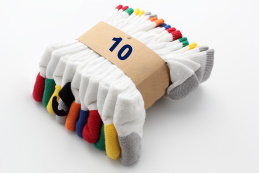
$12.97 10 pairs of sport socks |
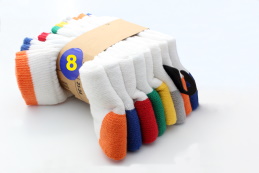
$10.97 8 pairs of sport socks |
He must also take into consideration the addition of the Harmonized Sales Tax (HST).
His parents have told him that he should create a budget to keep track of his income and expenses in order to reach his financial goal.
When will he have enough money to make his purchases?
Make sure that the students understand the task at hand by asking questions such as:
- Who can describe the task in their own words?
- What data is relevant in this situation?
- What is a budget? spending? a financial goal?
Inform the students that during this learning situation, they will have to present and justify their proposed budget for Miguel and the strategies they used to carry out the calculations.
Allow enough time for students to complete the task. Circulate in the classroom and observe the strategies the students use. Support as needed to help some teams progress by asking scaffolded questions (see below).
|
Possible Observations |
Possible Interventions |
|
The team has difficulty recognizing useful information. |
|
|
There is too much data, and the team is unable to do the calculations. |
|
|
The team is unable to create a strategy to calculate the total cost of the transaction(s). |
|
Possible answer
First, I have to determine the price of the socks which represents the most advantageous purchase. For each set of socks, I could have to calculate the unit price (the cost of a single pair of socks).
Option 1
I divide $12.97 by 10. I use my calculator to do the calculations.
\($12.97 \ / \ 10 \ \mathrm{pairs} = $1.30 \ / \ 1 \ \mathrm{pair} \)
I rounded 1.297 to the nearest hundredth. One pair of socks costs $1.30.
Option 2
I divide $10.97 by 8. I use my calculator to do the calculations.
\($10.97 \ / \ 8 \ \mathrm{pairs} = $1.37 \ / \ 1 \ \mathrm{pair} \)
I rounded 1.37125 to the nearest hundredth. One pair of socks costs $1.37.
Option 1 is the best buy since a pair of socks costs $1.30, 7¢ less than option 2.
Now I have to estimate and calculate the total cost of the items Miguel wants to buy for the start of the school year
- sneakers for $89.99
- $25.99 sweater
- $18.95 cap
- $12.97 socks
Estimation
\(\displaylines{\begin{align} 89.99 + 25.99 + 18.95 + 12.97 &≈ 90 + 30 + 20 + 10 \\ &≈ $150 \end{align}}\)
I rounded down the price of the socks since I rounded up all the other items.
To estimate the HST, I round 13% to 15%.
\( 15 \% = \frac{15}{100} \)
\(\frac{15}{100} \) means that for every $100, the HST will be $15.
For the amount of $150, the HST will be $15, plus half of $15, which is $7.50.
$15 + $7.50 = $22.50
I add the two amounts.
$150 + $22.50 = $172.50
I estimate the cost will be less than $172.50 since I have rounded most amounts up.
My calculations
I calculate the actual cost of the items by adding them together.
\(\displaylines{\begin{align} $89.99 + $25.99 + $18.95 + $12.97 &= 90 + 10 + 16 + 20 + 13 \ – \ 0.01 \ – \ 0.01 \ – \ 1.05 \ – \ 0.03 \\ &= 100 + 36 + 13 \ – \ 1 \ – \ 0.10 \\ &= 136 + 13 \ – \ 1 \ – \ 0.10 \\ &= 149 \ – \ 1 \ – \ 0.10 \\ &= 148 \ – \ 0.10 \\ &= $147.90 \end{align}}\)
Using the calculator, I calculate 13% for the HST.
\( $147.90 \times 13 \% = $19.23 \)
$147.90 + $19.23 = $167.13
The total cost of the items Miguel purchases is $167.13.
Miguel's financial goal is $167.13.
Now I'm making a budget.
|
Income |
Expenses |
Balance |
||
|
Gift |
$70 |
Video game |
$25 |
$70 - $25 = $45 |
|
Mowing the lawn 5 × $20 = $100 |
$100 |
$45 + $100 = $145 |
||
|
Household chores 6 × $5 = $30 |
$30 |
$145 + $30 = $175 |
||
If Miguel mows the lawn 5 times and does household chores 6 times, he will reach his financial goal of $167.13, since he will have saved $175.
Review
Duration: 30 minutes
Assessment can be carried out through…
When teams are finished, have students circulate and observe the other teams' representations.
By highlighting a few examples of students' strategies and specific reflections that are related to the learning goals and the success criteria, lead a mathematical conversation to elicit the strategies and the skills used and the knowledge acquired.
Possible questions include:
- Do all teams have the same strategies? the same budgets? Why?
- Have you noticed similar elements between your calculations and the calculations of the other teams? different elements?
- Do you think you have represented the problem correctly?
- Is your solution logical? Does your solution make sense? Why?
- Do you feel you have met the learning goals?
- How might budgets be helpful to manage finances? What emotions do you feel as you consider both income and expenses?
Following the discussions, ensure that students:
- Recognize the usefulness of estimating the result of a calculation before performing it.
- Understand the concept of unit price.
- Make connections between financial goals, income, expenses, and financial decision-making.
Consolidation of Learning
- Determine a financial goal for the class's end-of-year trip. Develop a budget so that you can achieve this goal. Take into
account the income you will have during the year as well as the expenses related to the trip. - As a class, determine a simple budget for a pizza lunch, with dessert, to celebrate a special occasion, including the number
of pizzas, drinks, and desserts needed, a tip for delivery, and more. Ask students to estimate the cost to cover lunch.
Links to Other Curriculum Expectations
Number
B2.2 Recall and demonstrate multiplication facts from 0 × 0 to 12 × 12, and related division facts.
B2.4 Represent and solve problems involving the addition and subtraction of whole numbers that add up to no more than 100 000, and of decimal numbers up to hundredths, using appropriate tools, strategies, and algorithms.
B2.9 Represent and create equivalent ratios and rates, using a variety of tools and models, in various contexts.
Instructional Differentiation and Universal Design for Learning
- Add smaller or larger dollar amounts of money.
- Use the calculator to perform the calculations.
- Determine a fictional financial goal for a scenario and develop a long-term budget.
- Provide a budget that already has certain entries completed and ask the student to complete it using information provided.
For an Extra Challenge
- Suggest that students find ways to save money for certain expenses or consider other ways to reach the financial goal (for example, consider trading clothes).
